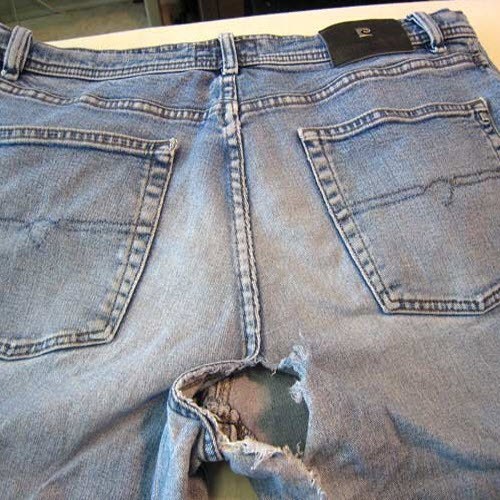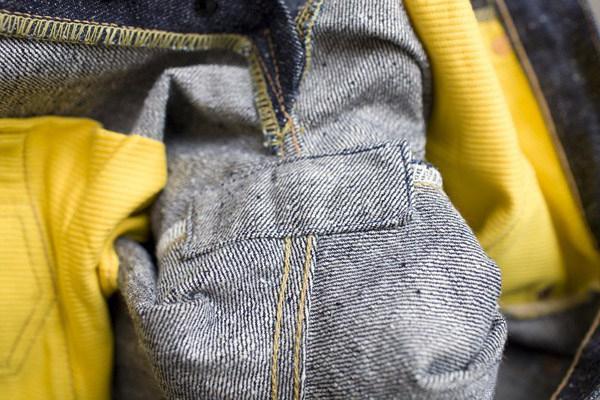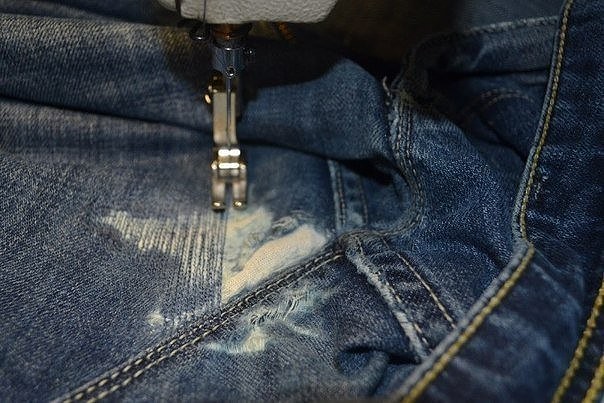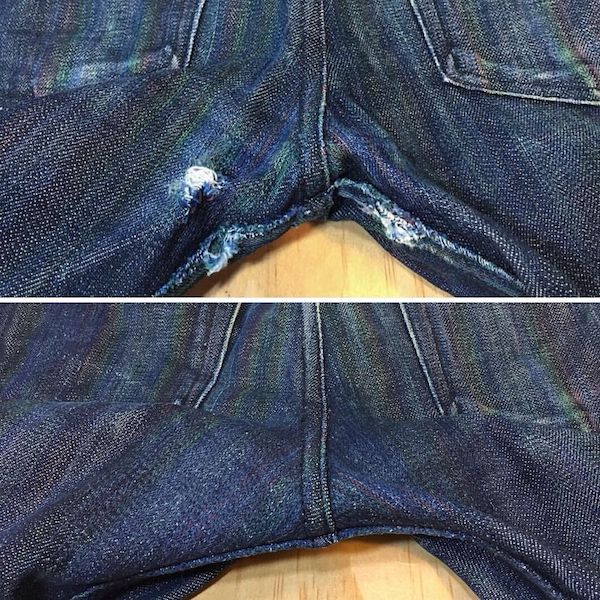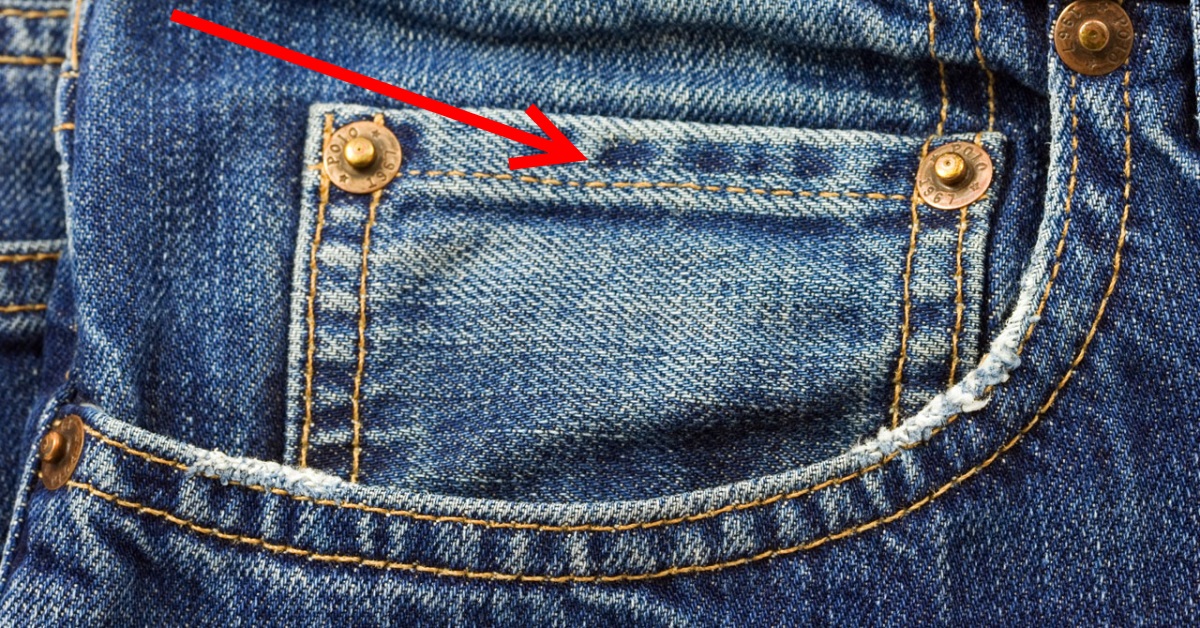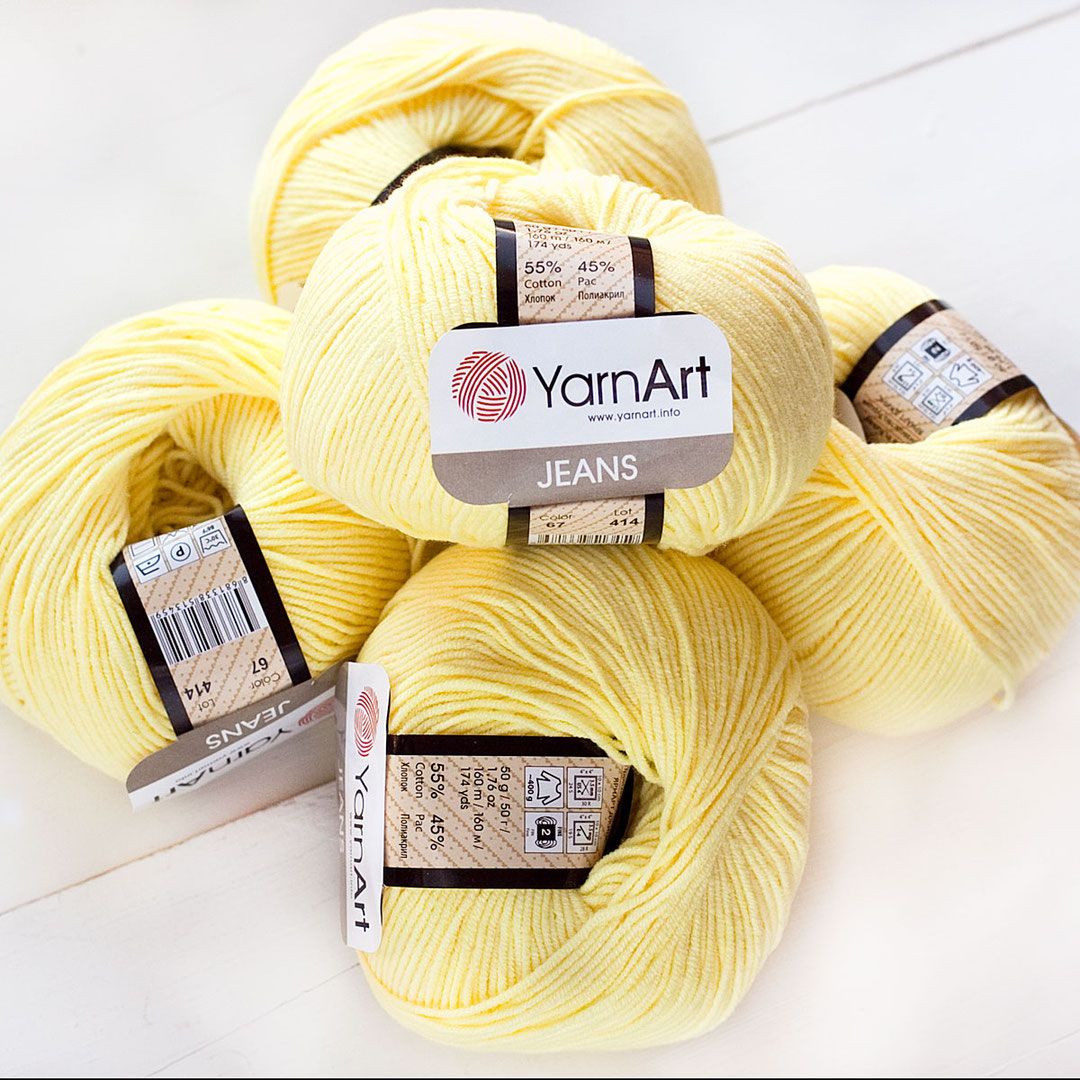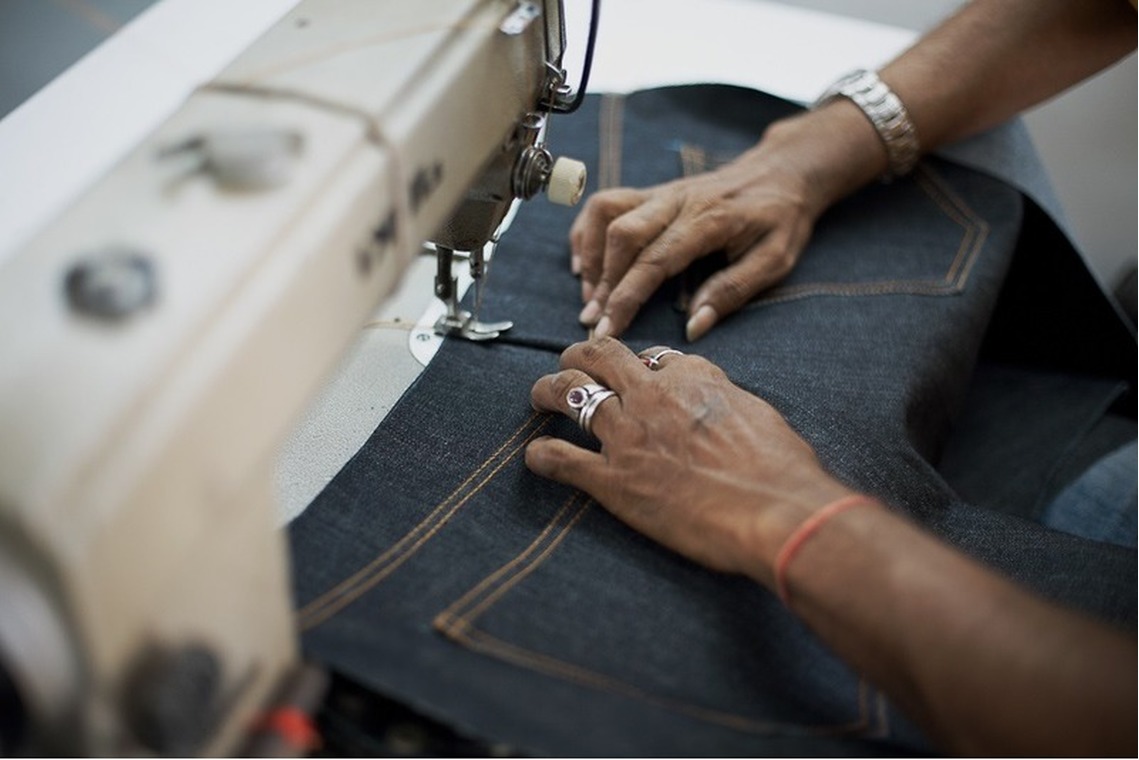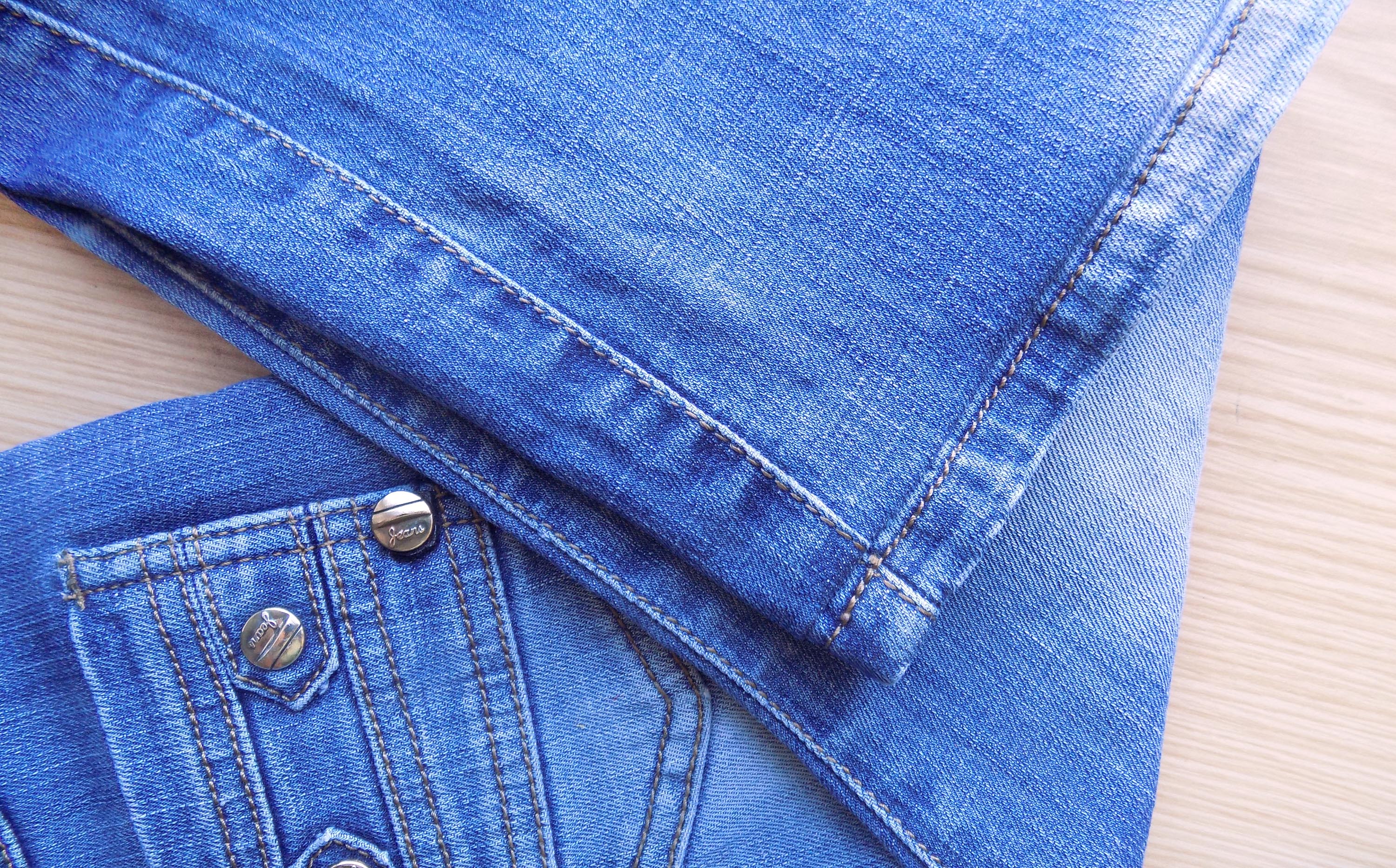Often we fall in love with specific things and it is very difficult to part with them. In the 21st century, jeans have become an integral part of any person's wardrobe, but what to do if they are worn out? Is it possible and how to sew jeans between the legs unnoticeably by hand or on a machine? These are the questions that are relevant for many.
Methods of elimination
If your jeans have a hole between your legs, you need to darn this place as inconspicuously as possible. However, not every housewife knows how to make a patch. The best method for fixing a large hole is undoubtedly a patch, while a minor abrasion can be repaired with plastering. However, before you start repairing something manually, it is recommended to select the right equipment:
- needles should be chosen household. They are usually sold in a set. From the thinnest, which can break under the density of the material, to huge thick needles, which are also not suitable due to the structure of the fabric. Darning of denim is carried out with numbers 11 (75 or) 14 (90);
- Threads should also be selected by thickness. So, to make a patch on jeans between the legs, cotton threads No. 50-80 or synthetic threads No. 50-60 are recommended.
In addition, it is important to consider color nuances when selecting threads and material for a patch. Threads and fabric should definitely be chosen to match the tone of the torn item. It may seem that black threads will be invisible on a dark blue background, but this is not true. Any deviation from the main range is immediately noticeable.
Fixing a problem between the legs on children's jeans is much easier. You can resort to the decoration method and hide the hole with an adhesive sticker and an iron. It is possible to choose a series of cartoon stickers and decorate the pants entirely with them. This will add naturalness and make the thing very stylish.
Patch
How to sew up jeans between the legs without being noticed? To properly and unnoticeably repair worn jeans, it is recommended to first prepare the damaged fabric. It is necessary to get rid of the "fringe" and give the hole a shape. The shape should match the contours of the patch, but be smaller. Next, select fabric and threads by color. There is no need to match the desired color with a felt-tip pen or paint. The shade will come off after the first wash, but it will be difficult to re-dye.
If jeans wear out more often than usual, the material should not be thicker than the original, and the seam should be made as rough as possible. Otherwise, when moving, the item will become unusable again. In expensive models, a small piece of material is included with the product as a sample for washing. If necessary, it is perfect for a patch. You can also take fabric from the front of the jeans, replacing the missing piece with a bright fashionable insert.
Next, you need to fasten the patch to the jeans with special sewing pins so that there is no shifting and the patch lies flat. It is recommended to apply a piece of fabric on the inside, just as the outer edges of the jeans need to be folded inward. Then you should thread a contrasting thread into a suitable needle, tie a knot at the end and go over the patch with a basting stitch.
The length of the thread should correspond to the size of the damaged area of the fabric. It is inconvenient to handle an excessively long thread. A short one will have to be connected with an additional piece. To measure the required length, you can apply the thread along the trajectory of the intended seam and add an additional 10 cm (knot and remainder for securing).
After the patch is securely fastened, you need to get rid of the pins and sew the fabrics together with a control line using a thread that matches the color of the materials. The seam should follow the shape of the patch, going around it. The thread needs to be secured at the end, but you should not pull the end too tightly. This will create a sloppy fold that is difficult to get rid of. Then you need to pull out the contrasting thread, iron the darned area, and that's it. The patch is ready!
Plastering
Stitching is the restoration of the structure of the fabric using stitches from a sewing machine. The result obtained depends entirely on the correctly selected threads. This method involves applying the patch only on the inside and gradually tightening the fabric. This way, only the threads will remain "in sight". This method is most convenient for small damages to the fabric. The only thing that can cause difficulty is the lack of a reverse seam function on the sewing machine.
Before starting machine operations, it is necessary to prepare the worn jeans manually. Using threads of a suitable tone, the two halves of the trousers should be pulled together. The ties should be long and frequent, but not tightening the material. Otherwise, creases will form, which will form unsightly folds on the product.
Next, you should select a suitable fabric, preferably close in color to the product (in case of repeated rupture). It is advisable to select a soft piece of fabric that does not cause irritation when walking. An excellent option would be interlining and interlining, however, such material is not found in every home, so you can limit yourself to any. The length of the piece should be 1-3 cm longer than the rupture.
Then you need to attach the patch to the product from the inside. You can fasten it with sewing pins, giving preference to needles with bows at the end, not with beads. If they are not available, you can fasten it with a brighter thread overcast. The main thing is that the patch should lie flat, completely adjacent to the jeans.
When the preparatory work is finished, it is time to start the actual stitching. A zigzag stitch is sewn from one edge. The seam should be very close, the ties should fit together as closely as possible.
When you reach the end, you need to unfold the jeans (if there is no reverse function) and go again until the hole completely disappears. If there is a reverse option, the procedure is significantly simplified: when you reach the end, you only need to set the mode. Next, it is recommended to cut off excess scraps and secure the thread firmly. Iron the seam additionally and enjoy your work.
Be careful when working with a sewing machine. You can accidentally sew on something unnecessary: a pocket, a trouser leg or other parts. This is unlikely to damage the product, but it will take a long time to rip out the machine seam.
Reasons for the appearance of holes
Jeans are the most popular clothing in the world for both boys and girls. And the appearance of holes between the legs is the most common problem with real products. There are several typical reasons for the appearance of scuffs:
- jeans wear out between the legs from constant use;
- a low-quality item already at the time of purchase serves as a guarantee of its short life;
- Excess weight is also a cause of holes. Legs rub against each other, gradually "wearing off" the material;
- an incorrectly selected washing mode is a direct path to damage of the product. People often neglect the inscriptions on the labels. However, if the washing temperature is indicated as 30 degrees, you should not soak them in boiling water;
- incorrectly selected model or unsuitable tailoring. When cutting out jeans, it is necessary to take into account the stretching and compression of the fabric. If the material is unfolded incorrectly, the formation of holes is inevitable.
Don't be upset when a small hole appears in your jeans, even in the most intimate places. A little patience, the right material and skillful hands can easily sew up a hole in your jeans between the legs. And if nothing can be fixed at all, you can sew yourself a bag, skirt or stylish accessories from your damaged jeans.
Video
https://youtu.be/l_clbeXb3Sc


